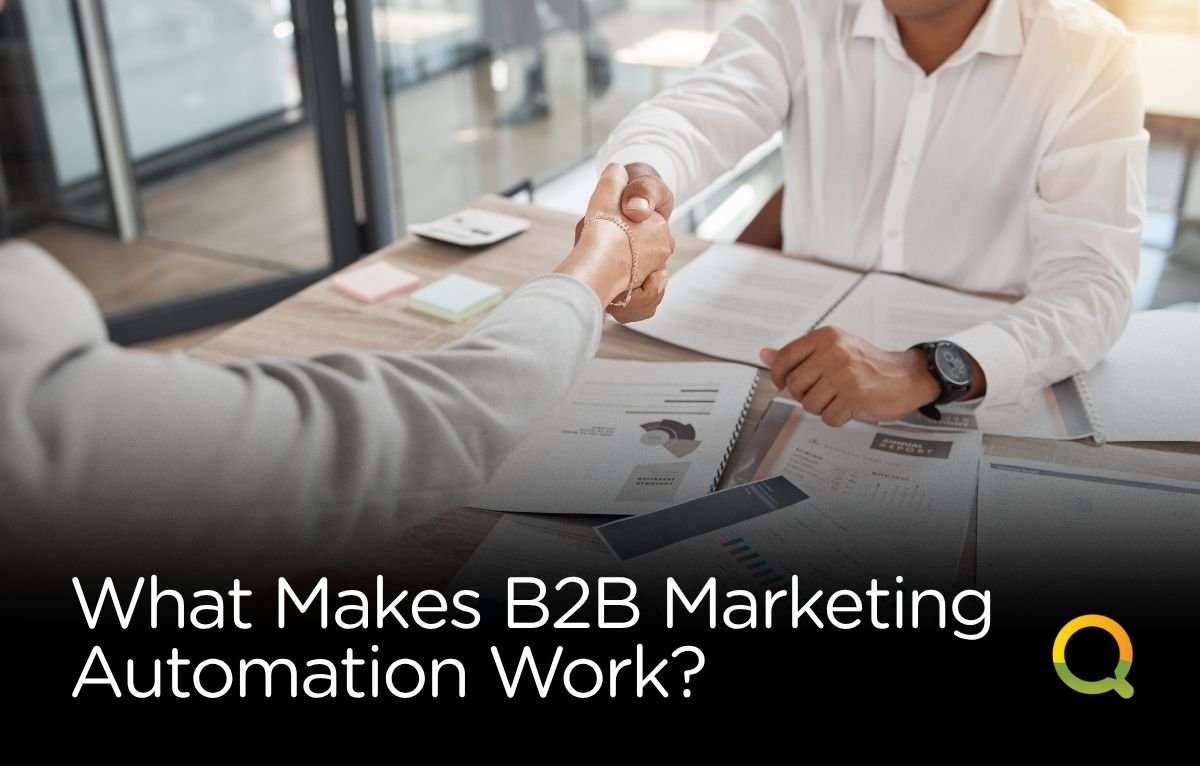
In business-to-business environments, decision-making is complex, cycles are long, and multiple stakeholders are involved.
That’s why a purpose-built B2B marketing automation strategy is critical for companies looking to streamline operations, deliver value at every stage, and ultimately drive revenue.
When done right, automation frees your team from repetitive tasks and empowers them to focus on high-value engagement.
B2B marketing isn’t the same as direct-to-consumer outreach. Buyers in B2B environments often research solutions, evaluate multiple vendors, consult internally, and expect detailed proof of ROI. A well-defined B2B marketing automation strategy structures this journey.
It ensures prospects receive educational content when they’re exploring, technical insights when they’re evaluating, and demos or proposals when they’re ready to commit, all without manual intervention at every step.
Mapping this buyer journey allows your automation to anticipate needs instead of reacting to them.
You’re not just sending emails. You’re guiding prospects through a logical, personalized sequence that reflects their readiness to engage.
The foundation of a successful strategy lies in mapping out your buyer journey. You’ll want to identify key stages such as Awareness, Consideration, Decision, and Post-Purchase. Then ask how automation can support each stage:
A structured B2B marketing automation strategy ensures no lead falls through the cracks. Every message sent is designed to align with where the buyer is in their journey.
A robust strategy relies heavily on your infrastructure. A centralized CRM, connected automation platform, and strong data practices are foundational.
These systems must capture lead behavior, score engagement, and support campaign personalization.
Lead scoring, segmentation, and tracking tools should be seamlessly integrated into your workflow.
This enables your team to identify which leads are ready for sales and which need more nurturing, avoiding guesswork and delays.
Real-time syncing across tools ensures your strategy moves at the same speed as your prospects.
You’ll also need a clear process for data hygiene.
Duplicate entries, outdated contacts, or inaccurate tagging can create confusion and derail automation flows. Regular audits and a governance framework help keep your systems clean and your automation effective.
A strong infrastructure also allows marketing and sales to work in sync.
When your CRM is well-integrated with automation tools, sales can view lead activity, engagement scores, and content history in one place. This visibility leads to better timing and relevance in outreach.
The success of a B2B marketing automation strategy depends on how well your workflows are built.
This isn’t just about scheduling emails. It’s about behavior-based delivery that reflects real-time activity. For example, a visitor from the healthcare industry may be routed through a different nurture track than someone from fintech.
Your workflows should be smart enough to adjust based on action or inactivity. Missed a webinar? Trigger a replay email. Viewed your pricing page twice? Send a comparison sheet. These micro-adjustments make automation feel personal while maintaining scale.
Creating conditional logic within your workflows also allows you to test and iterate faster.
A/B testing subject lines, adjusting email frequency, or tailoring content formats based on previous engagement makes your strategy more responsive and effective over time.
Adding alerts for when prospects hit key milestones or revisit high-intent pages can enable timely human follow-ups, making your automation smarter and more strategic.
These components help your team respond faster, build trust earlier, and close deals with less manual touch.
Adding lead prioritization rules like geographic targeting or budget range can enhance the focus of your strategy and support better use of sales resources.
The value of automation increases when it supports both teams.
Your B2B marketing automation strategy should define when a lead is passed from marketing to sales, how follow-ups are tracked, and how closed-loop feedback improves future campaigns.
Shared metrics and definitions create consistency. When both teams understand what makes a lead qualified, hand-offs become smoother and follow-through becomes more timely.
Encouraging regular communication between teams helps close feedback gaps. Sales insights on objection trends or lead behavior can be looped back into automation logic, strengthening campaign performance over time.
When your marketing automation strategy is working well, it does more than keep operations running. It creates space to scale.
Instead of creating campaigns from scratch, your team can optimize sequences that already exist. Instead of chasing leads manually, sales can focus on high-intent prospects surfaced by automation.
This unlocks efficiency and growth. As campaigns improve and engagement rates climb, your team gains time and data, two assets that fuel faster decision-making and higher conversions.
A strategic approach to scaling means planning automation across all lifecycle stages: from demand gen to retention and advocacy. This ensures your system grows in depth, not just in volume.
A smart B2B marketing automation strategy helps you turn attention into interest, and interest into revenue.
By aligning your tech, your content, and your people, you create a system that responds faster, engages deeper, and scales better.
Qupify builds these systems for high-growth B2B teams. If you’re ready to transform your funnel and close more deals with less effort, Qupify is ready to help.